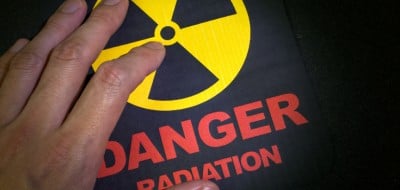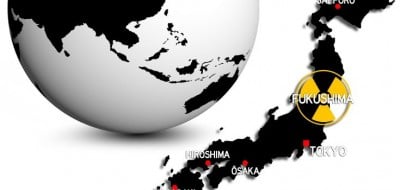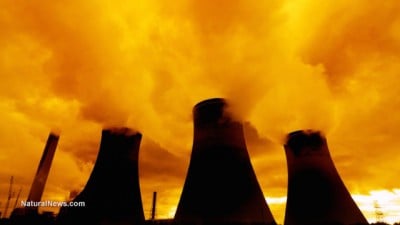Slowly Roasted by FukUshima
Fukushima Disaster Caused at Least
1,232 Fatalities in 2014 as Radiation Death Rate Accelerates
According to the most recent report, deaths in Japan attributable to the 2011 Fukushima nuclear disaster have continued to increase. Last year, the number of deaths increased by 18 percent over the year before.
A March 2011 earthquake and tsunami triggered multiple meltdowns at the Fukushima Daiichi nuclear power plant on Japan’s northeast coast, in what has become the worst nuclear disaster in history. A massive radioactive plume was released by the meltdowns, and the crippled plant has continued to leak radiation into the surrounding environment, including into the Pacific Ocean.
A total of about 160,000 people were evacuated as a result of the Fukushima disaster.
More
fatalities on the horizon?
According to data collected by the Fukushima Prefecture, 2014 saw 1,232 nuclear-related deaths. The two towns with the greatest number of deaths were both near the Fukushima plant: Namie, with 359 dead; and Tomioka, with 291 dead.
The term “nuclear-related” means a death that does not result directly from radiation exposure but is caused by a disease later caused by that exposure. Indeed, it is radiation-related diseases — including cancer, tumors and genetic damage — that often cause the bulk of health problems and fatalities in cases of radiation exposure.
One of the diseases particularly expected to show an uptick after the Fukushima disaster is thyroid cancer, because radioactive iodine from nuclear disasters tends to concentrate in the thyroid gland. An estimated 6,000 children contracted thyroid cancer following the Chernobyl nuclear disaster.
It typically takes four to five years for most nuclear-related thyroid cancers to manifest, and as that window approaches many Fukushima parents believe that their children are already showing symptoms. Fukushima officials have tested approximately 300,000 children and have turned up 100 cases of the disease, in contrast to the pre-disaster rate of one or two per million children.
One parent concerned about her child’s thyroid cancer risk is Megumi Muto. Muto’s daughter, Nana, has been diagnosed with lumps in her thyroid gland, and the lumps are growing. Muto is certain that the tumors were caused by Nana’s exposure to Fukushima radiation.
“I feel angry,” Muto said. “I think the authorities hide the real dangers and now many more children are being diagnosed.”
The health of both of Muto’s children has deteriorated after being exposed to the radioactive fallout, she said.
“They had rashes on their bodies then nose bleeds. My son’s white cells have decreased and they both have incredible fatigue,” she said. “They may not have cancer now but they both have multiple nodules around their thyroids. I’m really worried.”
Residents
suing government
Muto and about 100 other Fukushima residents are currently suing the local and national governments, alleging that the governments failed to protect their children during the nuclear disaster.
This sentiment was echoed in a recent report, released by a parliamentary panel, which said that the Fukushima incident was, in part, a “man-made disaster” caused by “government, regulatory authorities and Tokyo Electric Power Company,” which were all lacking in “a sense of responsibility to protect people’s lives and society.”
Because they do not trust the government’s number, Muto and her fellow plaintiffs have conducted their own tests of the radiation levels in their neighborhoods. One test, conducted near a school in Fukushima city, registered radiation levels nearly 100 times that found in Tokyo.
Those levels are high enough to warrant investigation, said plaintiff Sumio Konno, who has been a nuclear engineer for 29 years.
“I have to investigate and inform the public of the facts, that is why I have become one of the plaintiffs of the court cases,” Konno said. “They’re still not decontaminating areas where children live or near schools, even after four years.”
Fukushima breaking news 2015
(10:10) @ https://youtu.be/rMwAANhhy80
Judge Rules Against Japan
Nuclear Restart, Cleanup of Melted Reactors Non-Existent

Prefecture court in Japan has ruled that the only real protection from a catastrophic nuclear accident is to keep the nation’s atomic reactors shut down. Hideaki Higuchi, a local judge for Fukui, ordered that the Takahama nuclear power plant remain closed as there is not adequate proof that another disaster caused by an earthquake can be reliably averted if the atomic reactors are operating. Judge Higuchi had previously ordered that the Ohi nuclear plant in Fukui also remain closed for the same reason. Judge Higuchi’s Takahama order overruled Japan’s Nuclear Regulation Authority’s decision to restart under revised regulatory standards. In spite of the Abe government’s push to restart atomic power, Japan remains “Zero Nuclear” by popular demand and legal authority.
The court order occurs as TEPCO officials admit that environmental cleanup of the Fukushima Daiichi disaster is centuries away. Naohiro Masuda and Akira Ono , two top-level TEPCO senior managers charged with “decommissioning” the three melted Fukushima reactors say that a myriad of extremely complex and unproven technologies for removing, cleaning up and managing the melted reactor cores does not currently exist and “cannot say it is possible.”
Dale Klein, a former U.S. Nuclear Regulatory Commission Chair and now TEPCO’s chief apologist for the bankrupt corporation’s reactor restart committee, also admitted that a cleanup technology is non-existent. He and TEPCO however continue to hold out hope that robotic technology can eventually be developed to cleanup the radioactive site which accumulates hundreds of tons of radioactive water each day.
Meanwhile, the latest in state-of-the-art robotic technology commissioned to locate one of melted cores had to be abandoned by TEPCO after it failed three hours on its journey into the wreckage. The globally touted snake-like robot technology shut down before it could gather any information on the still missing and uncontained core material somewhere under Unit 1.
Copyright Beyond
Nuclear 2015
Containing Fukushima Is “Beyond
Current Technology”. Worldwide Radiation is the Unspoken Consequence
“The Chief Of The Fukushima Nuclear Power Station Has Admitted That The Technology Needed To Decommission Three Melted-Down Reactors Does Not Exist, And He Has No Idea How It Will Be Developed”

The Times of London reported last month:
The chief of the Fukushima nuclear power station has admitted that the technology needed to decommission three melted-down reactors does not exist, and he has no idea how it will be developed.
In a stark reminder of the challenge facing the Japanese authorities, Akira Ono conceded that the stated goal of decommissioning the plant by 2051 may be impossible without a giant technological leap. “There are so many uncertainties involved. We need to develop many, many technologies,” Mr. Ono said.
EneNews notes:
NHK ‘Nuclear Watch’ transcript, Mar 31, 2015 (emphasis added):
- NHK: The people trying to decommission the Fukushima Daiichi nuclear plant have been hit by setback after setback… and faced accusations of misconduct. It’s lost them a lot of public trust… [Naohiro Masuda, president of Tepco’s decommissioning company] revealed he’s not sure if he can comply with the government set plan [for] removing the fuel…
- Naohiro Masuda, president of Tepco’s Fukushima Daiichi Decommissioning Company: We have no idea about the debris. We don’t know its shape or strength. We have to remove it remotely from 30 meters above, but we don’t have that kind of technology, it simply doesn’t exist… We still don’t know whether it’s possible to fill the reactor containers with water.We’ve found some cracks and holesin the three damaged container vessels, but we don’t know if we found them all. If it turns out there are other holes, we might have to look for some other way to remove the debris.
- NHK: Asked [about the gov’t target to begin by 2020], his answer was surprisingly candid.
- Masuda: It’s a very big challenge. Honestly speaking, I cannot say it’s possible.
- Richard Lloyd Parry, The Times: I was at the plant last week on the tour and we talked Mr. Ono, the boss. He made no bones about the fact that the technology… to remove the molten or semi-molten fuel doesn’t exist yet… I asked him how can you be sure that it will be, and he said, “Well, 200 years ago people would never have dreamed of bullet trains or mobile phones, but they exist.” That seems to be the scale of the leap… that’s going to be required. So there must be immense uncertainties around that… There must surely be a chance that it won’t work out, and that the eventual solution will be something like the Chernobyl solution… a sarcophagus of some kind sealing in the 3 plants…
- Klein: This is something that has never been done… Units 1, 2, and 3… molten fuel penetrated the bottom of the vessel… We don’t know… how much and where it moved. ***
Watch: NHK ‘Nuclear Watch’ | Klein Press Conference
In related news, Fukushima radiation just arrived on the West Coast of North America.
We explained in 2012:
[Airborne] radiation from Japan’s nuclear accident has turned up in seaweed on the coasts of California, Washington and other parts of the West Coast of North America.
***
A 1955 U.S. government report concluded that the ocean may not adequately dilute radiation from nuclear accidents.
MIT says that seawater which is itself radioactive may begin hitting the West Coast within 5 years.
Fukushima plant springs another radioactive leak; radiation 600 times higher than 'safe' levels
On May 1, a worker at Japan's crippled
Fukushima Daiichi nuclear power plant discovered a storage tank leaking
radioactive water, plant operator Tokyo Electric Power Company (TEPCO)
announced the following day.
In March 2011, a major earthquake and tsunami triggered three separate meltdowns at the Fukushima plant. Large quantities of water have been rendered radioactive from being used to cool the crippled reactors. In addition, groundwater has been leaking into the basements of the reactors, mixing with contaminated water there and also becoming radioactive. TEPCO has been frantically pumping this water out and concentrating it into onsite storage tanks in an effort to minimize how much radioactive water spreads beyond the plant as groundwater.
The leak was found on the same day that TEPCO resumed tests for its beleaguered plans to construct a nearly mile-long "ice wall" of frozen soil to prevent more groundwater from infiltrating into the plant.
In March 2011, a major earthquake and tsunami triggered three separate meltdowns at the Fukushima plant. Large quantities of water have been rendered radioactive from being used to cool the crippled reactors. In addition, groundwater has been leaking into the basements of the reactors, mixing with contaminated water there and also becoming radioactive. TEPCO has been frantically pumping this water out and concentrating it into onsite storage tanks in an effort to minimize how much radioactive water spreads beyond the plant as groundwater.
The leak was found on the same day that TEPCO resumed tests for its beleaguered plans to construct a nearly mile-long "ice wall" of frozen soil to prevent more groundwater from infiltrating into the plant.
Second leak in weeks
The leaking tank was discovered when the
worker noticed a wet patch just three inches wide next to it. The ground at that
spot tested at 70 microsieverts per hour of beta-ray-emitting radioactivity;
this is more than 600 times the 0.11 microsieverts per hour of maximum
recommended exposure.
Workers piled sandbags around the tank to keep the leak from spreading, TEPCO said.
The leak was the second one reported in the last few weeks. In late April, a still-unexplained power outage caused water transfer pumps at the plant to shut down. The pumps were being used to move radioactive water from one drainage channel into another after it was revealed that water had been spilling from the first channel directly into the Pacific Ocean. When the power to the plants shut down, radioactive water resumed flowing into the sea. Approximately 100 tons of contaminated water -- also exceeding the legal limit -- are estimated to have escaped before power was re-established.
Workers piled sandbags around the tank to keep the leak from spreading, TEPCO said.
The leak was the second one reported in the last few weeks. In late April, a still-unexplained power outage caused water transfer pumps at the plant to shut down. The pumps were being used to move radioactive water from one drainage channel into another after it was revealed that water had been spilling from the first channel directly into the Pacific Ocean. When the power to the plants shut down, radioactive water resumed flowing into the sea. Approximately 100 tons of contaminated water -- also exceeding the legal limit -- are estimated to have escaped before power was re-established.
Cleanup could still
be centuries away
More
than four years after the Fukushima disaster, 70,000 people are still unable to
return to their homes
due to high levels of radioactive contamination. The local agricultural economy
has been devastated.
Meanwhile, TEPCO's efforts to clean up the plant are plagued with failures and missteps. Radiation levels inside the failed reactors are still so high that scientists believe that any human entering would die almost instantly.
As a result, TEPCO has struggled to find ways to locate the reactors' radioactive fuel rods, let alone remove them. These problems caused the company to announce last year that removal of the fuel would not begin until 2025, five years earlier than previously announced. The company expects the full cleanup to take 40 years, though the head of the plant has admitted that the technology for the cleanup does not actually exist and may not come into existence for centuries.
An example of this technological limitation was seen in late April, when a high-tech robot designed to withstand high levels of radiation died just three hour into its mission.
The "transformer" robot, a snake-like device designed to be able to change its shape to adapt to its surroundings, was supposed to be able to withstand the heat and radiation levels inside the reactor for ten hours.
Following the device's failure, TEPCO announced that it was severing the cables used to control the robot and postponing its plans for robotic inspection of the reactors.
"Radiation levels in these structures is higher, and working inside them is problematic," said TEPCO adviser Dale Klein, a former chairman of the U.S. nuclear regulatory commission. "This is a challenge that has never been faced before."
Meanwhile, TEPCO's efforts to clean up the plant are plagued with failures and missteps. Radiation levels inside the failed reactors are still so high that scientists believe that any human entering would die almost instantly.
As a result, TEPCO has struggled to find ways to locate the reactors' radioactive fuel rods, let alone remove them. These problems caused the company to announce last year that removal of the fuel would not begin until 2025, five years earlier than previously announced. The company expects the full cleanup to take 40 years, though the head of the plant has admitted that the technology for the cleanup does not actually exist and may not come into existence for centuries.
An example of this technological limitation was seen in late April, when a high-tech robot designed to withstand high levels of radiation died just three hour into its mission.
The "transformer" robot, a snake-like device designed to be able to change its shape to adapt to its surroundings, was supposed to be able to withstand the heat and radiation levels inside the reactor for ten hours.
Following the device's failure, TEPCO announced that it was severing the cables used to control the robot and postponing its plans for robotic inspection of the reactors.
"Radiation levels in these structures is higher, and working inside them is problematic," said TEPCO adviser Dale Klein, a former chairman of the U.S. nuclear regulatory commission. "This is a challenge that has never been faced before."
Via Global Research @ http://www.globalresearch.ca/fukushima-disaster-caused-at-least-1232-fatalities-in-2014-as-radiation-death-rate-accelerates/5441390
, http://www.globalresearch.ca/judge-rules-against-japan-nuclear-restart-cleanup-of-melted-reactors-non-existent/5443820
and http://www.globalresearch.ca/containing-fukushima-is-beyond-current-technology-worldwide-radiation-is-the-unspoken-consequence/5441434
and Natural News @ http://www.naturalnews.com/049702_Fukushima_radiation_leak_nuclear_disaster.html#ixzz3aP6gUzyE
For more information about FukUshima see http://nexusilluminati.blogspot.com/search/label/Fukushima
- Scroll down
through ‘Older Posts’ at the end of each section
Hope you like this
not for profit site -
It takes hours of work every day by
a genuinely incapacitated invalid to maintain, write, edit, research,
illustrate and publish this website from a tiny cabin in a remote forest
Like what we do? Please give anything
you can -
Contribute any amount and receive at
least one New Illuminati eBook!
(You can use a card
securely if you don’t use Paypal)
Please click below -
Spare Bitcoin
change?
For further enlightening
information enter a word or phrase into the random synchronistic search box @
the top left of http://nexusilluminati.blogspot.com
And see
New Illuminati – http://nexusilluminati.blogspot.com
New Illuminati on Facebook - https://www.facebook.com/the.new.illuminati
New Illuminati Youtube Channel - http://www.youtube.com/user/newilluminati
New Illuminati on Google+ @ https://plus.google.com/115562482213600937809/posts
New Illuminati on Twitter @ www.twitter.com/new_illuminati
New Illuminations –Art(icles) by
R. Ayana @ http://newilluminations.blogspot.com
The Her(m)etic Hermit - http://hermetic.blog.com
DISGRUNTLED SITE ADMINS PLEASE NOTE –
We provide a live link to your original material on your site (and
links via social networking services) - which raises your ranking on search
engines and helps spread your info further!
This site is published under Creative Commons (Attribution) CopyRIGHT
(unless an individual article or other item is declared otherwise by the copyright
holder). Reproduction for non-profit use is permitted
& encouraged - if you give attribution to the work & author and include
all links in the original (along with this or a similar notice).
Feel free to make non-commercial hard (printed) or software copies or
mirror sites - you never know how long something will stay glued to the web –
but remember attribution!
If you like what you see, please send a donation (no amount is too
small or too large) or leave a comment – and thanks for reading this far…
Live long and prosper! Together we can create the best of all possible
worlds…
From the New Illuminati – http://nexusilluminati.blogspot.com


No comments:
Post a Comment
Add your perspective to the conscious collective